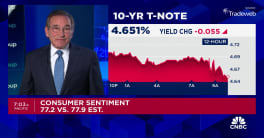As predicted, special interest groups are chiming in with suggestions as to what the economic stimulus package proposed by the Bush Administration and being debated by Congress should contain. Congress, however, is moving so fast to get something on the President's desk that those doing the suggesting are falling behind the eight-ball.
Last week it was the National Association of Realtors® (NAR)
which can out almost immediately with a very simple wish list; that any stimulus
package contain an increase in the conventional loan limit from $417,000 to
something in the range of $625,000 and that the so-called Federal Housing Administration
reform finally make it into law. By all accounts the stimulus package approved
on Thursday by the House does raise the loan ceiling.
On Thursday, about the time the House was approving its version of the legislation
(the Senate has yet to act,) the National Association of Home Builders (NAHB)
ran a full-page ad in USA Today and sent a letter to the leadership of both
the House and Senate with its own version of the housing incentives that should
be included in the proposed legislation. The NAHB has a longer list of suggestions
than did NAR and some of them are rather innovative. The question is whether
they are emerging too late to have any impact on the legislation.
Like NAR, NAHB would like to see an increase in the conforming loan limit for Fannie Mae and Freddie Mac. Rather than an absolute dollar amount for the new limit the association is calling for a new limit which is the lesser of the median home price or 150 percent of the current national limit. The increase would be temporary, due to be re-examined in two years.
Modernization of the Federal Housing Administration is also on the NAHB's list. The Association's president, Brian C. Catalde said in the letter to the Congressional leadership, "A revitalized FHA would be well-positioned to provide reasonably priced, low-down payment mortgage solutions to millions of America's less affluent home owners and potential home buyers. It would also help in reducing the excess inventory on the housing market."
Other NAHB suggestions include:
Creation of a tax credit for the purchase of a home.
The Association called this a means of eliminating excess inventory, and "ending the waiting-on-the-sideline strategy some potential buyers have adopted in response to overly negative media stories concerning the future of the housing market." A tax credit, NAHB said, would be the easiest and most cost effective way to reduce inventory which former Fed Chairman Alan Greenspan has called critical for the health of the economy.
NAHB cited a temporary stimulus measure in 1974 when Congress established a tax credit for the purchase of newly-constructed homes. The credit applied only to homes constructed before a certain date thus motivating sales but not additional construction. The credit was equal to the lesser amount of 5 percent of the home price of $2,000 which, adjusted for inflation would equal about $10,000 today.
Expand the net operating loss deduction carryback.
Under current tax law, builders and other businesses can claim and carry back net operating losses (NOL) deductions two years, hopefully being able to balance those losses against prior profits. With homebuilders' losses now already going back two years there will be nothing against which to write off recent NOLs except by carrying them forward to apply against future profits. This will result in the need to either increase borrowing or further liquidate land and homes. NAHB is pushing for the expansion of the carryback of NOLs for five years to a period of time when significant taxes were paid. This will provide "financial resources to the home building sector as well as all businesses to weather the economic downturn... and will help businesses facing difficult economic decisions concerning employment and community development."
Expand the Mortgage Revenue Bond Program
The existing Mortgage Revenue Bond Program (MRB) allows state and local governments to issue tax-exempt debt that may be used to finance mortgages at below-market interest rates. Making MRB more flexible by increasing house price limits and modifying the first-time home buyer requirement would enhance its use as an economic stimulus tool, particularly for communities facing excess housing inventory or a wave of foreclosures.
Designate housing an eligible investment for Tax-deferred retirement accounts.
Congress could increase capital available for down payments for home purchases by allowing these as an eligible investment (without early withdrawal penalties) for tax-favored retirement accounts.







